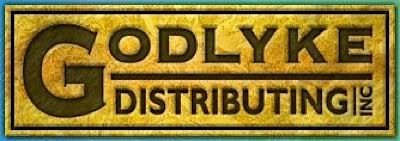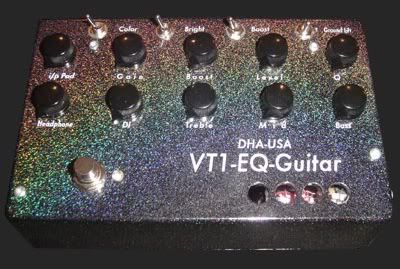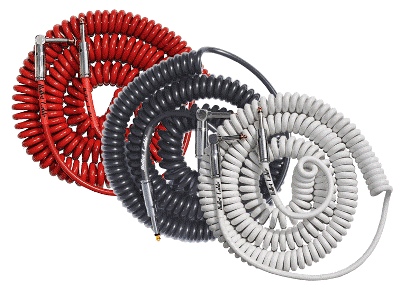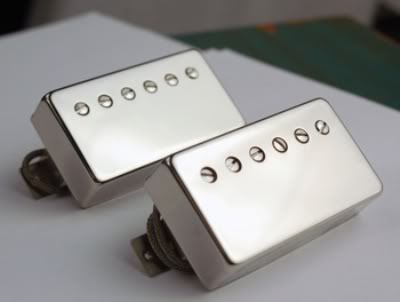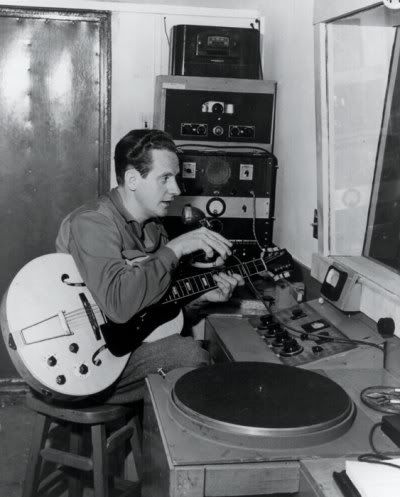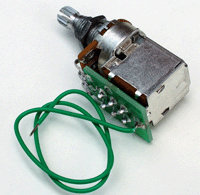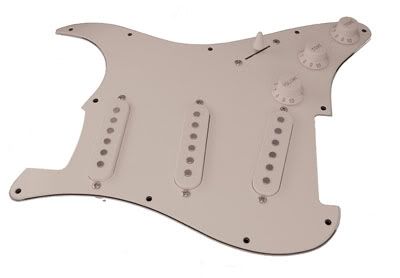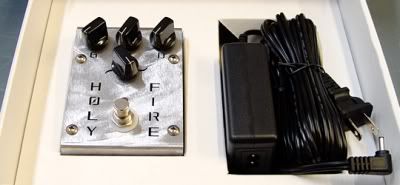
For those of you who haven't heard of or had a chance to try out the pedals from E.W.S. let me just say this...One hell of a talent! I first came across the E.W.S. line by mistake. I had gone to my local shop for a chorus pedal when I saw an old favorite of mine, the Arion SCH-1. I always thought to myself that is someone just went in and spent a little time with this pedal that it could really become one hell of a contender in the chorus pedal world. I had mentioned this thought to my buddy working at the shop and he says to me. "Go home, go online, google E.W.S. Arion mod and your wish will be granted." I was so freakin excited when the screen showed me the cool old style Arion pedal with what appeared to be some really cool mods. This was how I came about these cats and their world of killer stompboxes. At the moment E.W.S. is becoming a worldwide favorite and being used by many of the top-dogs in the music playing community. So come take a ride with me, and let's swim in some fuzz and chorus madness...beautiful madness.


The FD-1
FuzzyDrive
FuzzyDrive
For those of you who have been following my little blog you know I am a bigtime fuzzbox addict. When it comes to fuzz pedals I am not easily impressed, I've even been known to knock on some of the old time favorites, but is a topic for another time. When I think of a good fuzz I think thick, rich, fat, defined chaos. I think of the band Cream, Hendrix, The Velvet Underground, or The Electric Prunes, now that's fuzz baby! When I play a fuzzbox I want to hear fuzz, not out of control distortion or death metal tones, that is not fuzz. An easy way to define fuzz is that little pedal above, the FD-1 Fuzzy Drive from the good people at E.W.S. The FD-1 sports Volume, Gain, and Tone knobs, it's true bypass, and runs on the standard 9v adapter or 9v battery. But there is something unique about this fuzz pedal that makes it stand out from many other fuzz pedals, it also owns distortion and high overdrive characteristics. Not only can this pedal dish out some rockin fuzz tones, but it can also create some Blackface type smooth break-up. I have gotten some monster tones from boosting fuzz pedals with low overdrivers, the outcome is pure rock and roll bliss. The Fuzzy Drive takes this exact concept and does it damn well. This is a perfect fuzz pedal for those of you looking for a fuzzbox that can handle both chords and big fat one note fuzz licks. The FD-1's voice is a combo of rich'n'fat vintage style fuzz and harmonically charged distortion. I believe this pedal's design was directed at producing Clapton's woman tone of the 60's, and if this wasn't the plan they sure as hell struck gold anyhow. With all the tight lows and defined mids coming from this pedal I had to see how well it worked going into an already overdriven amp. We cranked up an 18 watt Marshall to med overdrive, fed it the FD-1 with the Gain knob set low. The return was a golden era rock distortion that would impress any size stadium. As we turned the Gain knob we noticed that the tone stayed intact, by compressing just the right amount the pedal was able to take the amp's already tight overdrive and break it up into perfect sounding fuzz, super groovy. By turning the Tone knob up or down we noticed we were able to control finger sensitivity. High Tone settings really creative touch sensitive response, while low Tone levels got us a warm and looser feel. Another really cool quality about the Tone knob is it's very responsive even at low volume levels. It was time to max out all the knobs through a clean amp sound. The sustain this pedal dishes out is bananas, it rings and rings, and rings some more. We also got some cool feedback effects, and once we added other effects into it things got really interesting. The Fuzzy Drive packs a mean amount of output that will have any combo of amp and guitar squealing at the sky. This is a great pedal for those of you that need to use both a fuzz and dist/od to get your tones, letting you save much needed pedalboard space. You'll get great sounding overdrive, distortion, and fuzz tones, with the ability of dialing in everything in-between. This is definitely a pedal for those of you looking to tap into the psychedelic and classic rock arena.
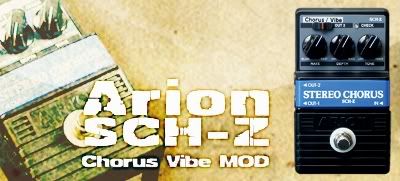
Arion SCH-Z
EWS Chorus/Vibe Mod
EWS Chorus/Vibe Mod
This here my friends, this here is a very very cool pedal. Everyone I have turned onto this pedal has been extremely surprised and very pleased. It has become a favorite of many professional players, used by the gigging cats, and a great pedal for adding life to any track. EWS has taken what was already a decent effect pedal and turned it into an unbelievable chorus pedal. This pedal's wide range of sounds is capable of fitting in with just about every type of music and will help expand your mind into some super cool psychedelic trips. The Arion SCH-Z with the EWS Chorus/Vibe mod was my first introduction into the world of EWS effects. This combo chorus and vibe pedal is not like any other of it's kind, it sports a sound of it's own which has really began to turn some heads. I absolutely love this, when someone can take a great sleeper and turn into something really special. To try to explain the sound of this pedal will not be easy. Like many other great sounding chorus and vibe pedals you have to hear them to really get a feel for what they're all about. A good chorus pedal is something you feel coming from your amp, just a great vibe pedal can help you get to the next lick. But non the less I will dive right in and give you the best description possible. First let's look at it's mods. For all us tone connoisseurs EWS has added a 3PDT Switch, making this badboy true bypass and true tone friendly. Next in line is the tone adjustment made to the Arion's tone circuit. The outcome is a much sweeter, smoother effect, and wider tone capabilities. Compared to the SCH-Z's stock chorus effect this modded version blows it out of the water. The chorus swirls much cleaner and warmer, making for a full lush effect. The pedal's LED has also been modified to a more vivid bright blue, a nice touch for those deathly dark stages. The next mod is where EWS really went to town, where the mono/stereo slider switch once was now lives the chorus/vibe option. This little control is what gives this pedal the ability to produce it's many many killer sounds. To add a little body or size to your tone just take the Depth and Rate controls and set them low. This is perfect for filling dead space, your chords, licks, and solos will instantly come to life. As I turned the Rate knob higher I began to get some great leslie effects. Everything from subtle to extreme leslie speaker sounds was attainable by tweaking the Depth knob. All those fantastic Hendrix and Trower classic rock tones came flying from my amplifier, and I was still only on the chorusing side of the pedal. I wanted to see just how extreme the chorus could get so I went ahead and maxed it out. I was surprised to hear that even them the sound was usable and somewhat organic sounding. We now set the Arion to Vibe mode and this is where the pedal really came to life. First let me say this is one of the easiest vibe pedals to dial-in, getting a good sound out of this pedal was cake. The vibe effect is not too thick and overpowering, it keeps your guitar signal true and doesn't wash away your playing. If you play a guitar with pickups that are either too bright or too dull, the Tone knob will help keep the chorus or vibe in just the right balance. I noticed the Tone knob worked great when playing with loud band members. Just turn it up a bit and listen to the effect signal stand out evenly. We also played some of our favorite overdrive pedals in front of the vibe effect and got some really convincing SRV blues tones. I must say EWS really payed great attention to the tone delivery and tone balance. Some vibe and chorus pedals tend to be either too weak, or become overwhelming and sink your root tone from your playing. This is not a problem with EWS's Arion mod, the pedal's effect and tone are tuned beautifully for both rhythm and lead work. I can see why so many professional players have come to rely on this pedal. It is user friendly, produces both unique chorus and vibe tones which is great for creating a signature sound, it's tone is well defined and never becomes harsh or thin, and last it is capable of delivering many different flavors. A classic in the making and most definitely a pedal that will become a collector as time passes. I highly suggest you try this one out, your tone will gladly welcome it.
For more info on EWS effect pedals you can go to www.ews-us.com or click the EWS logo in our links. Look for more EWS features, reviews, news, and updates. Remember, Let'em Hear You Scream!!!
For more info on EWS effect pedals you can go to www.ews-us.com or click the EWS logo in our links. Look for more EWS features, reviews, news, and updates. Remember, Let'em Hear You Scream!!!
----------------------------------------------------------------------------------
